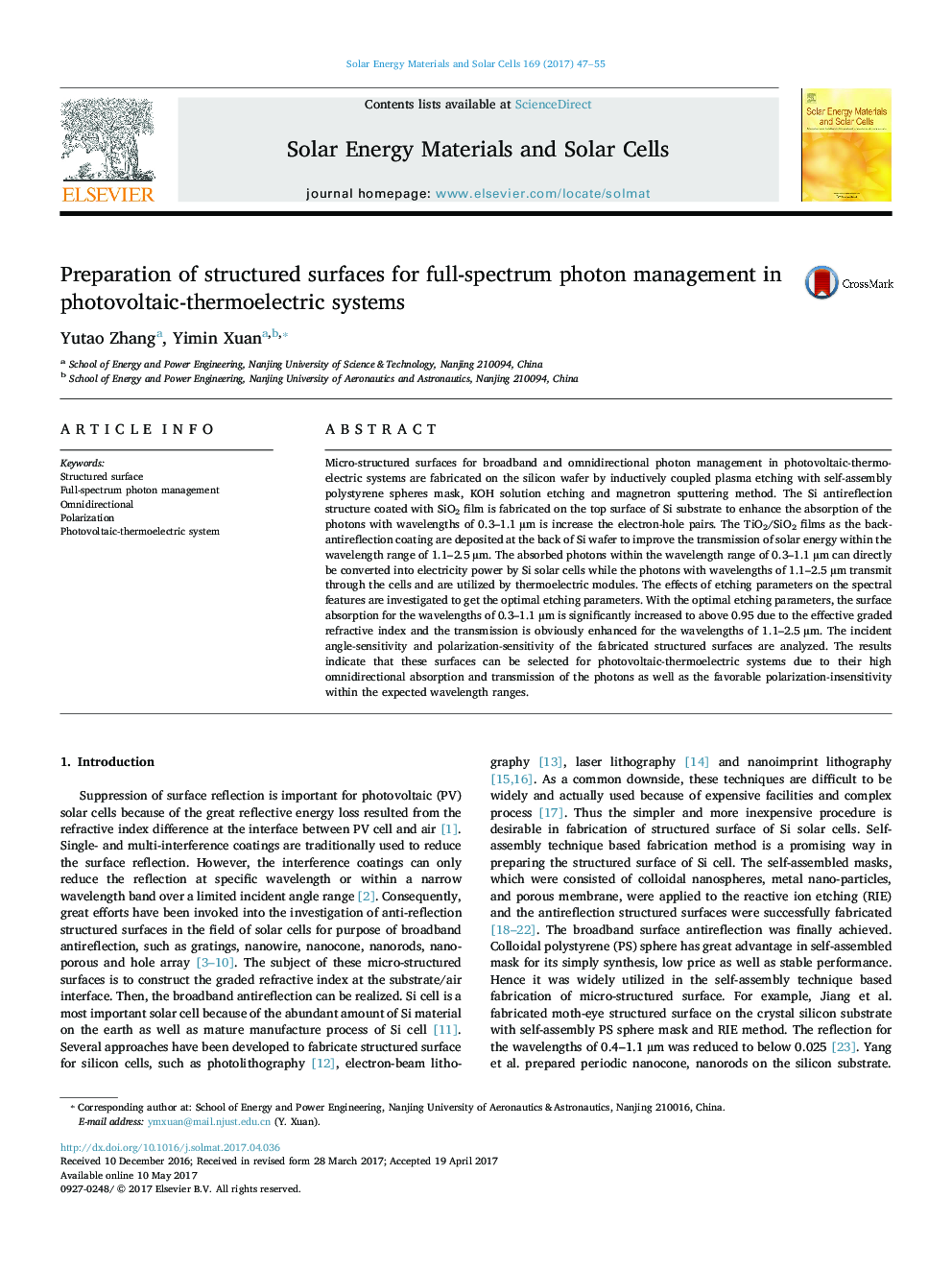| Article ID | Journal | Published Year | Pages | File Type |
|---|---|---|---|---|
| 4758737 | Solar Energy Materials and Solar Cells | 2017 | 9 Pages |
â¢An approach for fabricating photon management structured surfaces is set up for PV-TE systems.â¢The surface simultaneously realizes high absorption and transmission in the specified bands.â¢The surface possesses omnidirectional spectral properties in a wide incident angle range.â¢The surface exhibits polarization-insensitive features within a definite incident angle range.
Micro-structured surfaces for broadband and omnidirectional photon management in photovoltaic-thermoelectric systems are fabricated on the silicon wafer by inductively coupled plasma etching with self-assembly polystyrene spheres mask, KOH solution etching and magnetron sputtering method. The Si antireflection structure coated with SiO2 film is fabricated on the top surface of Si substrate to enhance the absorption of the photons with wavelengths of 0.3-1.1 µm is increase the electron-hole pairs. The TiO2/SiO2 films as the back-antireflection coating are deposited at the back of Si wafer to improve the transmission of solar energy within the wavelength range of 1.1-2.5 µm. The absorbed photons within the wavelength range of 0.3-1.1 µm can directly be converted into electricity power by Si solar cells while the photons with wavelengths of 1.1-2.5 µm transmit through the cells and are utilized by thermoelectric modules. The effects of etching parameters on the spectral features are investigated to get the optimal etching parameters. With the optimal etching parameters, the surface absorption for the wavelengths of 0.3-1.1 µm is significantly increased to above 0.95 due to the effective graded refractive index and the transmission is obviously enhanced for the wavelengths of 1.1-2.5 µm. The incident angle-sensitivity and polarization-sensitivity of the fabricated structured surfaces are analyzed. The results indicate that these surfaces can be selected for photovoltaic-thermoelectric systems due to their high omnidirectional absorption and transmission of the photons as well as the favorable polarization-insensitivity within the expected wavelength ranges.
